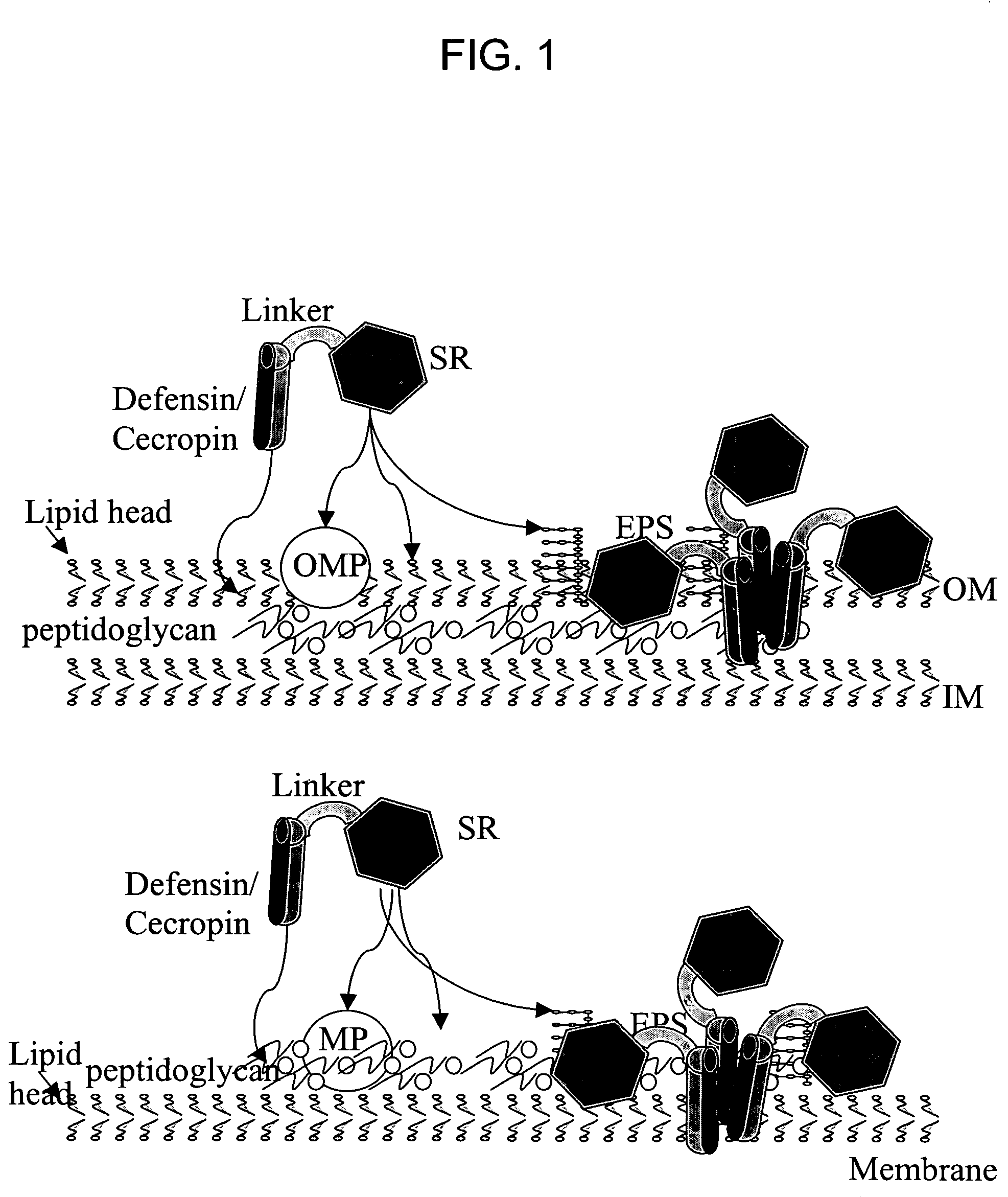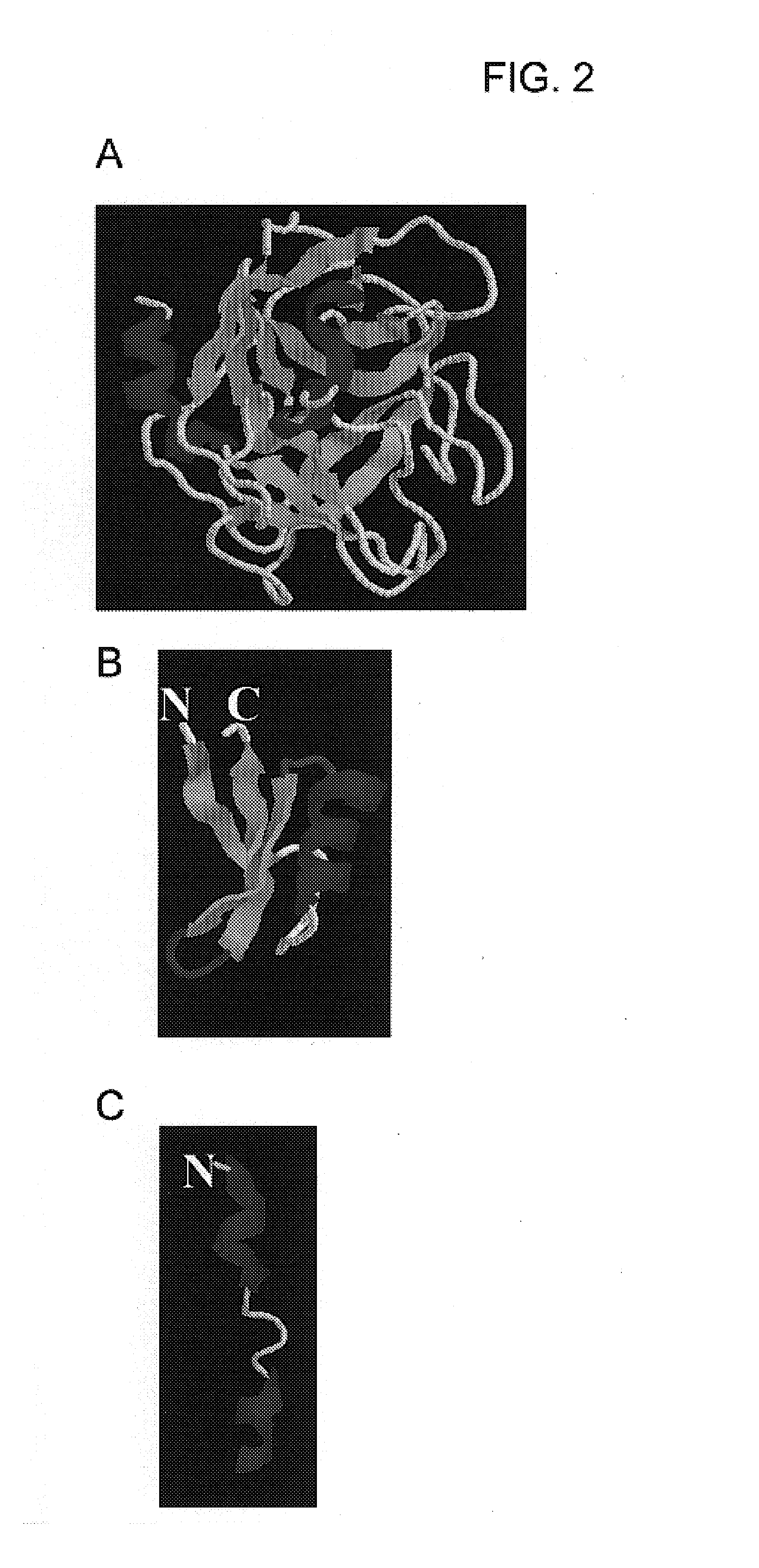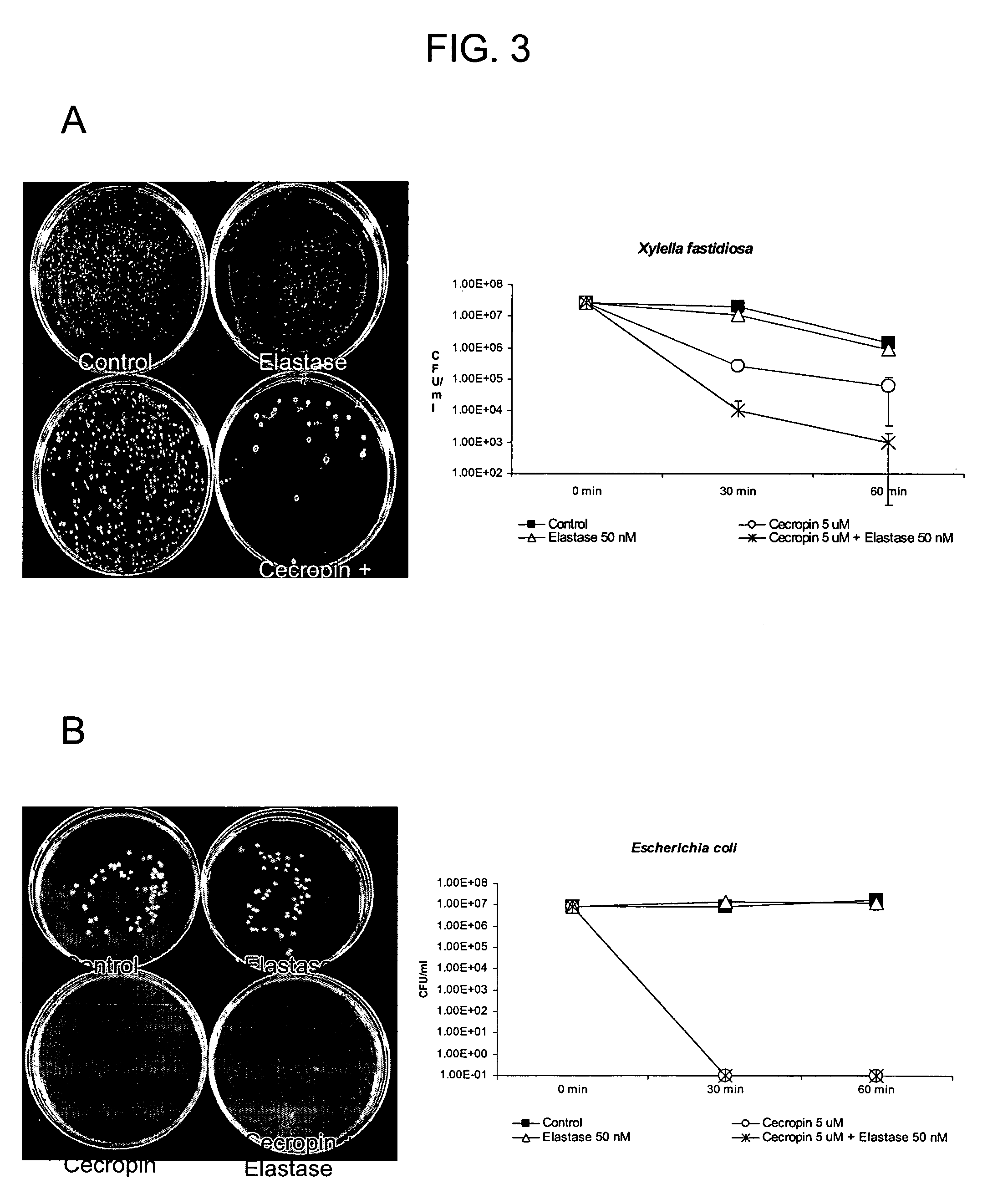Compositions and methods for the treatment of Pierce's disease
a technology for pierce's disease and compositions, applied in the field of plant diseases, can solve the problems of increasing the formation of pores, accelerating the lysis of bacterial cells, etc., and achieve the effects of effective killing the target bacteria, increasing the concentration of a protein, and increasing the aggregation
- Summary
- Abstract
- Description
- Claims
- Application Information
AI Technical Summary
Benefits of technology
Problems solved by technology
Method used
Image
Examples
example 1
Construction of Elastase-Cecropin and Elastase-Defensin Anti-Microbial Chimeras
[0178]DNAs encoding chimeric anti-microbial proteins comprising human neutrophil elastase fused to insect cecropin B via a polypeptide linker were prepared. More specifically, constructs linking the N-terminus of cecropin B to the C-terminus of elastase via a polypeptide linker were prepared, and have the amino acid sequences shown below.
[0179]Truncated HNE-Cecropin B; N- to C-terminus; linker peptide in boldface:
[0180]
(SEQ ID NO: 4)IVGGRRARPHAWPFMVSLQLRGGHFCGATLIAPNFVMSAAHCVANVNVRAVRVVLGAHNLSRREPTRQVFAVQRIFENGYDPVNLLNDIVILQLNGSATINANVQVAQLPAQGRRLGNGVQCLAMGWGLLGRNRGIASVLQELNVTVVTSLCRRSNVCTLVRGRQAGVCFGDSGSPLVCNGLIHGIASFVRGGCASGLYPDAFAPVAQFVNWIDSIIQRW KIFKKIEKMGRNIRDGIVKAGPAIEVLGSAKAIGK
[0181]In addition, constructs encoding chimeric anti-microbial proteins comprising human neutrophil elastase (N-terminal) fused to spinach group IV defensin (C-terminal) via the polypeptide linkers (GSTAPPA)2 or GSTAPPAGSTA w...
example 2
Anti-Microbial Activity of Cecropin and Neutrophil Elastase against Xylella fastidiosa and E. Coli
[0183]The anti-microbial activities of the active components of the chimera described in Example 1, infra, were evaluated in cell viability assays with both Xylella fastidiosa and E. coli. Xf strain “Stags Leap” and E. coli strain HB 101 were used. Briefly, cells were grown in liquid LB medium overnight (E. coli) or in solid PW medium (Almeida et al., 2004, Current Microbiol. 48: 368-372) for a week (Xf), centrifuged at 6500×g for 1 min and resuspended in 10 mM sodium phosphate buffer (pH 7.4) to give approximately 106 colony forming units / ml.
[0184]Insect Cecropin B (5 μM) (Sigma) and Human Neutrophil Elastase (2.5 nM) (Sigma) were added to 0.25 ml of bacterial suspension and cells were incubated at 37 C. After 30 and 60 minutes, aliquots were subjected to serial dilutions, spread on LB or PW plates and incubated for 24 hours for E. coli and 1 week for Xf. Bacterial growth was monitore...
example 3
Expression of SRD-Defensin Chimera in Insect Cell System
[0186]A prototype SRD-defensin chimera, comprising rat mannose binding protein (as the SRD) linked to a mammalian beta-defensin, was expressed in a Baculovirus expression system. The chimera SRD and defensin components are linked via a polypeptide linker with the amino acid sequence QASHTCVCEFNCAPL. The chimera has the following structure (where the SRD component is underlined, the linker is in bold type, and the defensin component is in italics):
[0187]
(SEQ ID NO:10)TDEVTEGQFM YVTGGRLTYS NWKKDEPNDH GSGEDCVTIV DNGLWNDISC QASHTCVCEF
[0188]A molecular model of the chimera is shown in FIG. 4. The membrane-permeable defensin and the mannose-binding loop are both pointed toward the bacterial membrane. The SRD (a mannose binding domain) attachment to mannose also allows membrane insertion of defensin.
[0189]For expression in the insect cell system, DNA encoding the chimera was cloned into a modified form of the Baculovirus transfer vect...
PUM
| Property | Measurement | Unit |
|---|---|---|
| pH | aaaaa | aaaaa |
| pH | aaaaa | aaaaa |
| nucleic acid | aaaaa | aaaaa |
Abstract
Description
Claims
Application Information
 Login to View More
Login to View More - R&D
- Intellectual Property
- Life Sciences
- Materials
- Tech Scout
- Unparalleled Data Quality
- Higher Quality Content
- 60% Fewer Hallucinations
Browse by: Latest US Patents, China's latest patents, Technical Efficacy Thesaurus, Application Domain, Technology Topic, Popular Technical Reports.
© 2025 PatSnap. All rights reserved.Legal|Privacy policy|Modern Slavery Act Transparency Statement|Sitemap|About US| Contact US: help@patsnap.com



